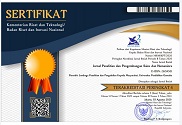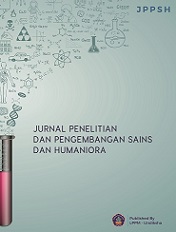Exploring Language Preferences and Perceptions: A Comparative Study of English and Yoruba among Adolescents in Oyo State, Nigeria
DOI:
https://doi.org/10.23887/jppsh.v8i3.87091Keywords:
School-Going Adolescents’ Attitude, Language Preferences, English Language, Yoruba LanguageAbstract
It is astonishing that many senior school-aged adolescents in Oyo State do not grasp English or make grammatically acceptable responses, but freely express themselves in Yoruba. This study therefore comparatively analyse school-going adolescents’ attitudes to English and Yoruba Languages in Oyo State, Nigeria. This was a descriptive survey of research type. The population for this study comprised all school-going adolescents in Oyo State. Four hundred and seventy-one (471) school-going adolescents were sampled for this study using a multi-stage sampling technique. A researcher’s designed questionnaire with a reliability coefficient of 0.77 was used for data collection while the data collected were analysed using descriptive statistics of percentage to answer the research questions and inferential statistics of independent t-test and a two-way Analysis of Variance (2-way ANOVA) to test the hypotheses postulated at 0.05 alpha level. Findings from this study revealed that the most widely spoken language among secondary school students in Oyo State was English; the attitude of secondary school students to English and Yoruba Languages was positive. It was therefore recommended among others that school-going adolescents in school should maintain a positive attitude towards learning English without abandoning their home tongue, particularly Yoruba, to enhance their academic performance; English and Yoruba teachers can engage students by simplifying and sequentially teaching language to foster a positive attitude towards learning.
References
Ahmad, I. S., Abdullah, H., & Ghani, M. F. A. (2014). Attitudes and Motivation toward Learning the English Language among Students from Islamic Education System Background: Exploring the Views of Teachers. Journal of Education and Learning (EduLearn), 8(3), 195–208. https://doi.org/10.11591/edulearn.v8i3.262.
Akinsola, I. (2024). Theatre-in-Education packages and secondary students’ knowledge of Yoruba orature in Ibadan metropolis. African Journal of Teacher Education, 13(3), 169–191. https://doi.org/10.21083/ajote.v13i3.7926.
Almohaimeed, N., & Alnasser, S. (2022). English Language Use by Saudi Female Students in Higher Education: Insights for Educators and Policymakers. International Journal of Language and Literary Studies, 4(2), 283–295. https://doi.org/10.36892/ijlls.v4i2.885.
Amechi, A. (2017). Indigenous language implementation and nation building: The Nigerian Experience. UJAH: Unizik Journal of Arts and Humanities, 18(1), 168–199. https://doi.org/10.4314/ujah.v18i1.9.
Araromi, M. O. (2018). Language policy implementation in multilingual Nigeria: French and mother–tongue experience. AFRREV LALIGENS: An International Journal of Language, Literature and Gender Studies, 7(1), 94–102. https://doi.org/10.4314/laligens.v7i1.10.
Asse, A., Ahmad, A., Jabir, M., Idhan, M., & Harun, U. (2024). Al-Intiqaiyyah Method to Improve Maharah Al-Qira’ah Skills in Arabic Language Learning. Al-Hayat: Journal of Islamic Education, 8(4), 1245–1260. https://doi.org/10.35723/ajie.v8i4.690.
Büyükkarcı, K. (2016). Is it language learning anxiety and/or attitude of university students that determines their academic success? Turkish Online Journal of English Language Teaching, 1(2), 57–65. https://doi.org/10.32959/tojelt.229308.
Chan, J. Y. H. (2018). Gender and attitudes towards English varieties: Implications for teaching English as a global language. System, 76, 62–79. https://doi.org/10.1016/j.system.2018.04.010.
Coskun, G., & Tasgin, A. (2018). An investigation of anxiety and attitudes of university students towards English courses. Journal of Language and Linguistic Studies, 14(2), 135–153. https://doi.org/10.3316/informit.870003451557676.
Courtney, L. (2017). Transition in modern foreign languages: a longitudinal study of motivation for language learning and second language proficiency. Oxford Review of Education, 43(4), 462–481. https://doi.org/10.1080/03054985.2017.1329721.
Courtney, L., Graham, S., Tonkyn, A., & Marinis, T. (2017). Individual differences in early language learning: A study of English learners of French. Applied Linguistics, 38(6), 824–847. https://doi.org/10.1093/applin/amv071.
Dragojevic, M., Fasoli, F., Cramer, J., & Rakić, T. (2021). Toward a century of language attitudes research: Looking back and moving forward. Journal of Language and Social Psychology, 40(1), 60–79. https://doi.org/10.1177/0261927X8763004.
Falola, T., & Afolayan, M. O. (2020). A History of The Six-Year Primary Project in the Use of Yoruba as the Medium of Primary Education. Yoruba Studies Review, 4(2), 1–14. https://doi.org/10.32473/ysr.v4i2.130046.
Fidelis, F., & Onyango, D. O. (2021). Availability of ICT facilities and teachers’ competence in the use of ICT among public secondary schools in Ngara district, Tanzania. East African Journal of Education and Social Sciences, 2(2), 34–40. https://doi.org/10.46606/eajess2021v02i02.0073.
Flores, N., & Rosa, J. (2015). Undoing appropriateness: Raciolinguistic ideologies and language diversity in education. Harvard Educational Review, 85(2), 149–171. https://doi.org/10.17763/0017-8055.85.2.149.
Group, D. F. (2016). A Transdisciplinary Framework for SLA in a Multilingual World. The Modern Language Journal, 100(S1), 19–47. https://doi.org/10.1111/modl.12301.
Habók, A., & Magyar, A. (2020). The role of students’ approaches in foreign language learning. Cogent Education, 7(1). https://doi.org/10.1080/2331186X.2020.1770921.
Harju, A., & Åkerblom, A. (2020). Opening up new spaces for languaging practice in early childhood education for migrant children. International Journal of Early Years Education, 28(2), 151–161. https://doi.org/10.1080/09669760.2020.1765087.
Hilliard, A. (2015). Tanzanian Students’ Attitudes Toward English. Tesol Journal, 6(2), 252–280. https://doi.org/10.1002/tesj.147.
Ideland, M., & Malmberg, C. (2014). ‘Our common world’belongs to ‘Us’: constructions of otherness in education for sustainable development. Critical Studies in Education, 55(3), 369–386. https://doi.org/10.1080/17508487.2014.936890.
Jee, M. J. (2018). Heritage language proficiency in relation to attitudes, motivation, and age at immigration: a case of Korean-Australians. Language, Culture and Curriculum, 31(1), 70–93. https://doi.org/10.1080/07908318.2017.1342653.
Katushemererwe, F., & Nerbonne, J. (2015). Computer-assisted language learning (CALL) in support of (re)-learning native languages: the case of Runyakitara. Computer Assisted Language Learning, 28(2), 112–129. https://doi.org/10.1080/09588221.2013.792842.
Kule, A. M., Wilson, M., Ampeire, K. H., & Turiabe, V. (2021). Teacher characteristics and the Use of ICT in Rural Secondary Schools of Bwera Sub County, Kasese District, Uganda. Interdisciplinary Journal of Rural and Community Studies, 3(2), 30–40. https://doi.org/10.51986/ijrcs-2021.vol3.02.04.
Kutuk, G., Putwain, D. W., Kaye, L. K., & Garrett, B. (2022). Relations between gender stereotyping and foreign language attainment: The mediating role of language learners’ anxiety and self-efficacy. British Journal of Educational Psychology, 92(1), 212–235. https://doi.org/10.1111/bjep.12446.
Laila, A. (2015). The effective school: The role of the leaders in school effectiveness. Educational Research and Reviews, 10(6), 695–721. https://doi.org/10.5897/ERR2014.1986.
Lanvers, U. (2017). Contradictory Others and the Habitus of Languages: Surveying the L2 Motivation Landscape in the United Kingdom. The Modern Language Journal, 101(3), 517–532. https://doi.org/10.1111/modl.12410.
Li, J., Snow, C., & White, C. (2015). Urban adolescent students and technology: access, use and interest in learning language and literacy. Innovation in Language Learning and Teaching, 9(2), 143–162. https://doi.org/10.1080/17501229.2014.882929.
Magocha, M., Mutasa, D. E., & Rammala, J. R. (2019). Mother-tongue education in South Africa: A highly contested terrain of the 21st century. South African Journal of African Languages, 39(3), 253–262. https://doi.org/10.1080/02572117.2019.1672320.
Masnani, S. W., Agussalim, A., & Mutmainnah, I. A. (2024). Semangka: Representasi Solidaritas Palestina Melalui Trikotomi Tanda Charles Sanders Pierce. Nady Al-Adab: Jurnal Bahasa Arab, 21(2), 113–124. https://doi.org/10.20956/jna.v21i2.36086.
Mavuru, L., & Ramnarain, U. D. (2020). Language affordances and pedagogical challenges in multilingual grade 9 natural sciences classrooms in South Africa. International Journal of Science Education, 42(14), 2472–2492. https://doi.org/10.1080/09500693.2019.1655177.
Mishina, U. L., & Iskandar, I. (2019). The role of English language in Nigerian development. GNOSI: An Interdisciplinary Journal of Human Theory and Praxis, 2(2), 47–54. http://gnosijournal.com/index.php/gnosi/article/view/8.
Msimanga, A., Denley, P., & Gumede, N. (2017). The Pedagogical Role of Language in Science Teaching and Learning in South Africa: A Review of Research 1990–2015. African Journal of Research in Mathematics, Science and Technology Education, 21(3), 245–255. https://doi.org/10.1080/18117295.2017.1367874.
Obiegbu, I. (2015). The English language and sustainable development in Nigeria. Open Journal of Political Science, 5(2), 82–86. https://doi.org/10.4236/ojps.2015.52009.
Obiegbu, I. (2016). Mother tongue education: A panacea to effective teaching and learning of English in Nigeria primary schools. AFRREV LALIGENS: An International Journal of Language, Literature and Gender Studies, 5(2), 50–59. https://doi.org/10.4314/laligens.v5i2.5.
Okwudilichukwu Ugwu, E. (2020). Language policy and planning in Nigeria: Moving beyond rhetoric. Language Problems and Language Planning, 44(1), 1–19. https://doi.org/10.1075/lplp.00053.okw.
Omotoyinbo, D. W. (2016). Language policy in Nigeria: Prospect for national unity. International Journal of Society, Culture & Language, 4(1), 80–88. https://www.ijscl.com/article_15036_cb20d529230d19129c37cb7f85c89ca4.pdf.
Owojecho, F. (2020). Implementation challenges of national language policy in Nigeria: The roles of the indigenous languages. International Journal of Language and Literary Studies, 2(1), 270–279. https://doi.org/10.36892/ijlls.v2i1.183.
Oz, H., Demirezen, M., & Pourfeiz, J. (2015). Emotional Intelligence and Attitudes Towards Foreign Language Learning: Pursuit of Relevance and Implications. Procedia-Social and Behavioral Sciences, 186, 416–423. https://doi.org/10.1016/j.sbspro.2015.04.118.
Platsidou, M., Kantaridou, Z., & Papadopoulou, I. (2017). International orientation as predictor of EFL learning strategy use in adolescent students. Language, Culture and Curriculum, 30(2), 157–173. https://doi.org/10.1080/07908318.2016.1236127.
Qasim, M., Aziz, S., & Kunwar, I. (2022). Attitude of Undergraduate Pakistani Students of other Disciplines towards English as a Minor Subject: A Case Study of Undergraduate Students at Minhaj University Lahore, Pakistan. Journal of Social Sciences Review, 2(4), 334–339. https://doi.org/10.54183/jssr.v2i4.97.
Sardegna, V. G., Lee, J., & Kusey, C. (2018). Self-Efficacy, Attitudes, and Choice of Strategies for English Pronunciation Learning. Language Learning, 68(1), 83–114. https://doi.org/10.1111/lang.12263.
Schwartz, M., & Palviainen, Å. (2016). Twenty-first-century preschool bilingual education: facing advantages and challenges in cross-cultural contexts. International Journal of Bilingual Education and Bilingualism, 19(6), 603–613. https://doi.org/10.1080/13670050.2016.1184616.
Sosan, I. A., & Okewole, J. O. (2024). Assessment Of Yoruba Language Curriculum Implementation In Lower Primary Schools In Osun State, Nigeria. Indonesian Journal of Elementary Teachers Education, 5(1), 42–53. https://doi.org/10.25134/ijete.v5i1.9228.
Tom-Lawyer, O., & Thomas, M. (2020). Re-examining the status of the English Language in Anglophone Western Africa: A comparative study of Ghana and Nigeria. English Linguistics Research, 9(4), 6–22. https://doi.org/10.5430/elr.v9n4p6.
Touijar, W. (2020). The Impact of Modernity on Youth Culture: Their Linguistic Choices, Thoughts and Attitudes. The International Journal of Applied Language Studies and Culture, 3(2), 25–34. https://doi.org/10.34301/alsc.v3i2.29.
Zulfikar, T., Dahliana, S., & Sari, R. A. (2019). An Exploration of English Students Attitude toward Learning English. English Language Teaching Educational Journal, 2(1), 1–12. https://doi.org/10.12928/eltej.v2i1.947.
Downloads
Published
Issue
Section
License
Copyright (c) 2024 Oyeyemi Jumoke Jekayinfa, Yekeen Bello, Surajudeen Adewale Badru, Aminat Ozohu Aburime

This work is licensed under a Creative Commons Attribution-ShareAlike 4.0 International License.
Authors who publish with the Jurnal Penelitian dan Pengembangan Sains dan Humaniora agree to the following terms:
- Authors retain copyright and grant the journal the right of first publication with the work simultaneously licensed under a Creative Commons Attribution License (CC BY-SA 4.0) that allows others to share the work with an acknowledgment of the work's authorship and initial publication in this journal.
- Authors are able to enter into separate, additional contractual arrangements for the non-exclusive distribution of the journal's published version of the work (e.g., post it to an institutional repository or publish it in a book), with an acknowledgment of its initial publication in this journal.
- Authors are permitted and encouraged to post their work online (e.g., in institutional repositories or on their website) prior to and during the submission process, as it can lead to productive exchanges, as well as earlier and greater citation of published work. (See The Effect of Open Access)









